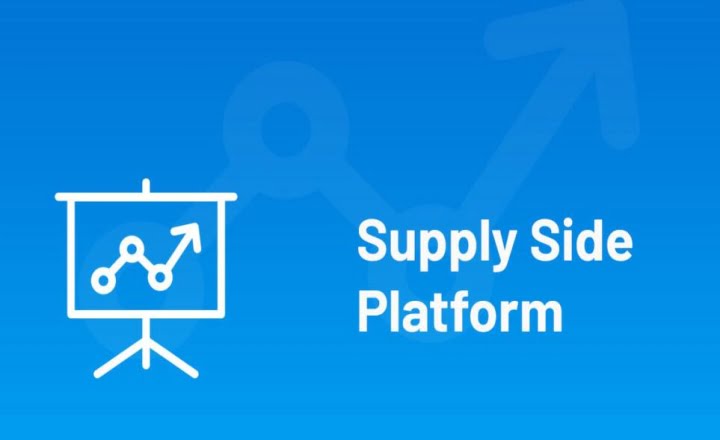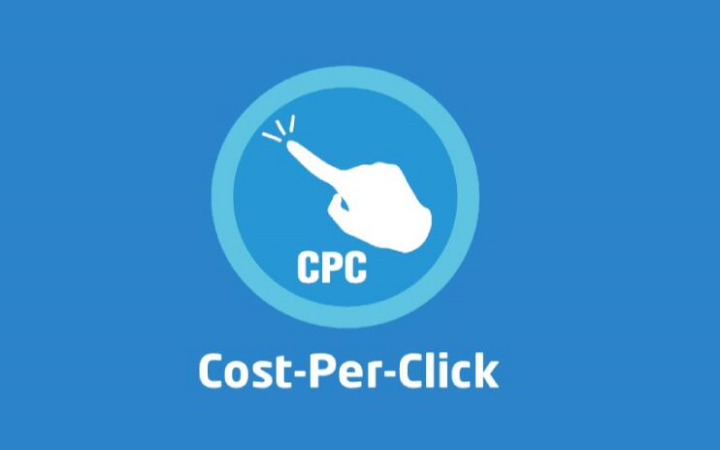Exploring various platforms and the canvassing of the digital advertising ecosystem—which greatly varies—is crucial to effectively conducting a digital marketing campaign. One such tool that is often talked about but still not fully understood is the Supply Side Platform (SSP). Now, through the extensive guide that we are presenting to you, you will be able to get the full story about SSPs, how they work, what their basic elements are, and where they come into play in the ad-selling process. Consequently, you will be able to make success in your digital marketing campaigns through the new partnership with SSPs. Further, a more effective advertisement strategy will be exercised.

What Are Supply-Side Platforms?
An SSP is an online tool used by publishers to determine, sell, and adjust their ad stock. Publishers can use an SSP to synchronize their openings with multiple advertising patrons simultaneously through automated technologies. Put, SSPs enable publishers to increase their revenue by selling ad space more efficiently and at a satisfactory price.
The SSPs General Features
- Inventory Organizing: The publishers may competently control the appearance of advertising supplied on their website.
- Real-Time Bidding (RTB): Implies that an instant auction is held for an advertising spot.
- Uses Publisher Data: It analyzes publisher data through optimization of ad placements and pricing.
- Reporting and Analytics: The report includes margins of performance and earnings.
What Is The Operation Principle of A Supply-Side Platform (SSP)?
SSP acts like a middleman between publishers and advertisers to connect ad auction systems that aim at monetizing the ad impression via the sales of ads in the automated sales process. The next section will be a step-by-step analysis of the working of SSP:
- Ad Inventory Integration: Publishers join their ad spaces with the SSP.
- Ad Call: A site ad makes an ad to the SSP when a user opens a publisher’s site.
- Auction Beginning: The SSP starts an auction and starts inviting advertisers to offer their prices for the ad impression.
- Bid Assessment: Real-time bidding is a technology that allows advertisers to place bids automatically based on users’ interest in an ad; DoubleClick operates the world’s largest RTB exchange.
- Winning Bid Selection: The highest bid is the best choice, and thus, the ad is shown to the customer.
- Ad Display: The DSP network is displaying the winning ad on the concerned website.
- Data Gathering: It collects performance data and gives reporting to the reseller.
What are the Main Components of an SSP?
The primary components of an SSP are the key to understanding its functionality and effectiveness. Here are the main components:
Inventory Management
Provider inventory management is a core component that enables publishers to organize and control their advertising spaces. The mechanism allows for setting floor prices and availing tools like inventory categorization.
Real-Time Bidding (RTB) Engine
The RTB engine conducts the actual real-time auctions. The system matches bids and responses in seconds and thereby ranks orders for the bidding ad to the highest spot by the highest bidder.
Data Management Platform (DMP) Integration
SSPs frequently incorporate Data Management Platforms (DMP) to access audience data. This consolidation is expected to move on to audience targeting specifically targeted at individual companies and product development, which will have a higher impact on the market.
Analytics and Reporting
Publishers’ use of analytics and reporting tools is influential because they reveal ad performance, income generated, and user engagement. These are crucial for ad campaign management and improving publishers’ overall performance.
Fraud Detection and Prevention
To ensure ad inventory integrity, SSPs are enlisted and use anti-fraud technology that tracks and detects fraud. This device detects, minimizes, and reduces cheating, so only legitimate ads are allowed.
How Do Supply-Side Platforms Support the Ad Selling Process?
SSPs are versatile tools that cut down the ad-selling process by:
Automated Sales: SSPs automate the advertising inventory selling process. This will prevent the need for any manual negotiations and will also save time and money spent on advertising directly.
- Real-Time Bidding: Through real-time Bidding, SSPs ensure that the ad spaces are put up for auction and that the highest bidder receives them, thus generating the maximum revenue.
- Access to Multiple Buyers: The supply-side platform works by creating a connection between publishers and different buyers, including DSPs and ad exchanges, thus increasing the sales success ratio.
- Yield Optimization: Supply-side platforms enable publishers to grow their revenue through the provision of digital analytics and tools such as the setting of floor prices and other pricing rules.
I’m sure that because of this new, streamlined process of ad selling, the advertising companies and their customers are very pleased and confident too.
Understanding SSPs and DSPs
SSPs are tools that publishers use, whereas DSPs are platforms for advertisers to create a cohesive buying and selling process. Attention needs to be placed on the correlation between SSPs and DSPs to grasp the entire system of programmatic advertising fully.
What is a DSP?
A Demand-Side Platform is a technology platform through which advertising companies buy digital ad inventory across several sources using only one interface. Typically, DSPs give advertisers control over their campaigns through elements such as targeting criteria, thereby allowing advertisers to compete for ad impressions in real-time data auctions.
How SSPs and DSPs Work Together
It could be said that the interaction between SSPs and DSPs is the basic infrastructure of the programmatic advertising environment:
- Bid Request: The SSP scanning sends bid requests to multiple DSPs during an ad call.
- Bid Response: At this time, DSPs assess the request by considering if they can meet the advertiser’s standards and submit their very own bids.
- Auction and Selection: The SSP auctions off to the highest bidder.
- Ad Serving: Finally, the winning ad reaches the user’s endpoint on the publisher’s site.
In simple words, this well-coordinated interaction guarantees that publishers make money and advertisers meet their targeting goals without any hassles on both sides.
Best Supply-Side Platforms
Several SSPs have proven to be frontrunners in the industry, each possessing their unique characteristics and advantages. These are the best 4 SSPs you need to look out for:
Google Ad Manager
What Makes Google Ad Manager Exceptional
Google Ad Manager (GAM) is a multi-functional PHP that fronts real advanced ad server feature sets combined with flamboyant monetization tools. It has the attention of publishers everywhere because of its wide reach and close mapping to Google’s supersized universe.
Key Features of Google Ad Manager:
- Unified platform: By doing it all in one place, we can connect direct sales transactions with programmatic deals and ad exchanges.
- Advanced targeting: Google’s corporate targeting approach is used to address the correct audience.
- Comprehensive reporting: The data provided provides deeper insights, which in turn help you determine what strategies you need to work on to maximize your ad value.
OpenX
What Makes OpenX Unique
One of the world’s top SSPs, OpenX delivers a highly efficient, transparent, and customizable ad exchange. Known for its commitment to quality and innovation, OpenX allows publishers to control their revenue so that they can be at their best.
Key Features of OpenX:
- Real-time bidding: Implementation of real-time bidding can increase CPMs.
- Brand safety: Making sure that brand safety is the top priority, with the application of rigid measures.
- Customizability: Get the platform the way you want to be suitable solutions.
Rubicon Project
The Edge of Rubicon Project
Magnetite has successfully incorporated the Rubicon Project into its family. The company is another leading SSP that describes many tools and functions for publishers. Moreover, it showcases robust auction mechanisms and broad demand-side integrations. Rubicon Project is committed to making ad transactions a transparent and efficient marketplace.
Key Features of Rubicon Project:
- Global reach: Approach a large number of global inventories of different kinds of devices globally.
- Transparent auction: Participate in the process of fair and complete auctioning.
- A current working environment: Use different software mechanisms to achieve overall efficiency, resulting in a decrease in staff.
PubMatic
How PubMatic Enhances Monetization
With PubMatic’s cloud infrastructure platform, publishers can set their own rules for their digital advertising strategies. PubMatic’s creative strategy and customer-oriented approach have helped it continue to smash records in publisher promotion.
PubMatic:
- Data analytics: Stay well informed about current market trends by using powerful data analytics.
- Flexible integration: Be able to pick and merge various demand sources straightforwardly.
- Publisher-focused: Give the most priority to publisher needs by offering them the best support and custom solutions.
Final Thoughts
Supply-side platforms (SSPs) are vital devices that publishers would not like to lose to earn maximum revenue from advertisements. They manage their inventory perfectly. The main component of the SSPs is the Ad Exchange. With their proper integration with the DSPs, digital marketers, publishers, and advertisers can get more pictures and, hence, be more successful.
Implementing best practices for using ad servers is a major step in your advertising processes that ensures your ads are displayed to the right people and achieve the desired goals.
Are you ready for the evolution of your digital marketing? Utilize SSPs and ad servers to simplify your advertising duties, which will consequently lead you to brand-new heights and make you more successful.


